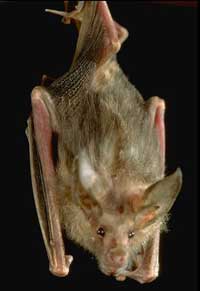 Male bats with developed brains tend to have relatively “modest” testicles. Researchers indicate that this correlation arises because both organs require substantial energy to develop, forcing species to strike an optimal balance.
Male bats with developed brains tend to have relatively “modest” testicles. Researchers indicate that this correlation arises because both organs require substantial energy to develop, forcing species to strike an optimal balance.
An analysis of 334 bats revealed that in species where females are promiscuous, males possess larger testicles but have relatively smaller brains. Conversely, in species where females are monogamous, the situation is reversed. The fidelity of the males has no impact on brain or testicle size.
Both brain tissue and sperm cells demand significant metabolic energy for their growth and maintenance. Different species have prioritized the development of one organ over the other, all aimed at enhancing their reproductive success.
“The testicle mass of bats ranges from 0.12% to 8.4% of their body mass, surpassing that of any mammal. In primates, testicle mass only accounts for 0.02-0.75% of body weight,” said Scott Pitnick from Syracuse University, USA.
Efficient energy use is crucial for bats, Pitnick noted: “They are small creatures flying over vast areas, and they need to fly a lot, especially during the breeding season.”
Initially, Pitnick and his colleagues speculated that in species with promiscuous females, males would require larger brains to avoid being “cuckolded.” Thus, they were surprised to find the opposite. “Perhaps fidelity requires more neural resources.”
Harry Moore, a researcher at the University of Sheffield, UK, stated that testicle size is often linked to sperm quantity. “In species with promiscuous females, males must compete to fertilize the female’s eggs, thus needing to produce more sperm. This is especially true in bats, where females store sperm for several months.”
M.T. (Newscientist)





















































